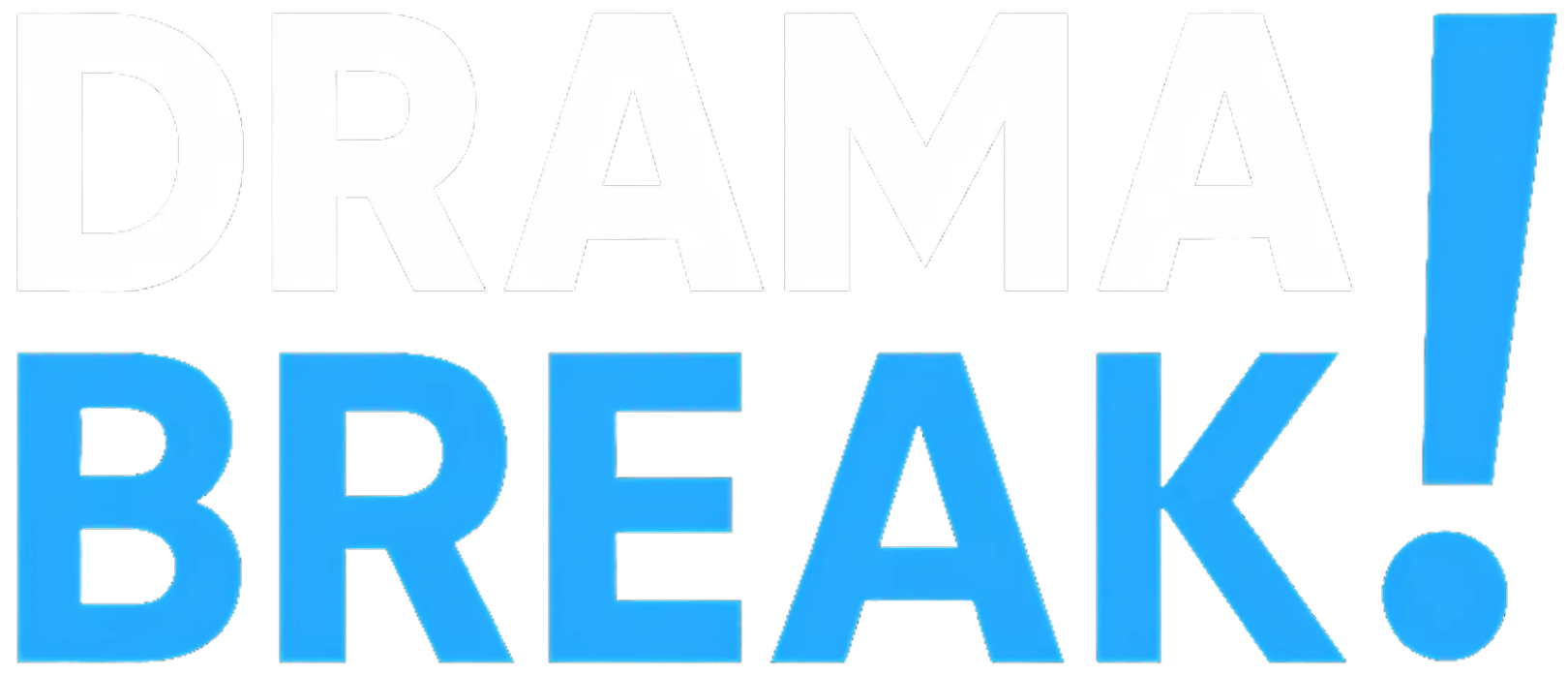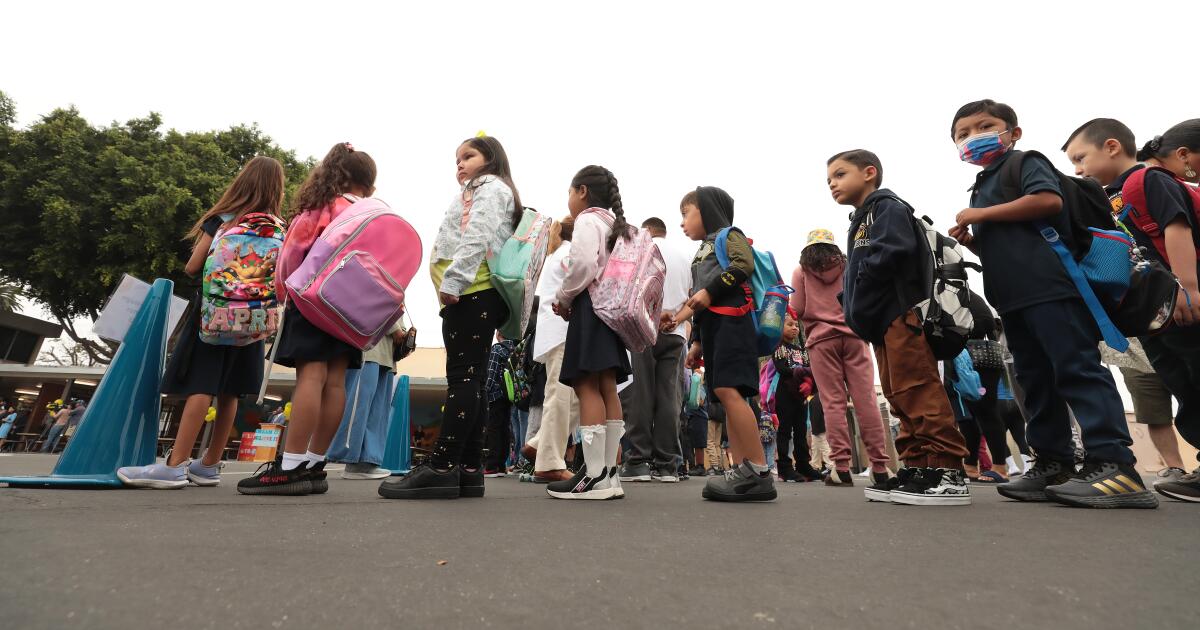A steep drop in Los Angeles Unified scholar enrollment — 27% over about 10 years and 44% over about 20 — has not been matched by a proportionate drop within the variety of campuses or staff, considered one of a number of markers indicating troublesome choices forward for the nation’s second-largest faculty system, a report launched Thursday reveals.
The distinction is making a math downside for Los Angeles Unified: methods to minimize prices whereas additionally preserving what’s most necessary for college kids — and likewise greatest for workers.
The problem forward is specified by a research by the native nonprofit GPSN that acknowledges there are neither good nor simple solutions.
The lack of college students has “profound implications for the district’s funds and operations, as fewer college students imply much less state and federal funding on the district stage, leading to decreased staffing, restricted program choices, and underutilized amenities,” the report states.
On the identical time, regardless of LAUSD shedding greater than 300,000 college students since its peak enrollment 23 years in the past, the variety of working colleges has declined solely barely, lower than 5%, the report says. “This mismatch contributes to underutilized campuses and thinly unfold district sources.”
Confronting the enrollment decline additionally performs out in staffing ranges, worker pay and retiree well being advantages, amongst different issues.
The brand new report echoes considerations raised by L.A. colleges Supt. Alberto Carvalho, though he has but to completely deal with the monetary implications. In funds displays over the previous few months, he has repeatedly stated he should stability a possible future monetary disaster with adequately assembly present wants.
He’s additionally stated that closing colleges could be a final resort. First, he desires to economize by closing underused or inefficient buildings on campuses — whereas leaving the faculties open. GPSN helps this technique, whereas additionally expressing doubt that it may obtain the financial savings wanted.
Though district officers on Thursday had not but had a possibility to answer the brand new report, they’ve needed to take care of the problems it raises on an ongoing foundation — as produce other faculty methods throughout the state and nation.
The Board of Training, below stress from many constituencies, has been inclined to keep away from cost-cutting and layoffs and has supported wage will increase. Highly effective constituencies that exert affect embrace the worker unions, lively guardian teams and a coalition of nonprofit advocacy teams that wishes extra sources poured into the highest-need colleges and neighborhoods.
The GPSN report contrasts sharply with the perspective of the lecturers union, which cited L.A. Unified’s June 30 ending stability of $4.9 billion as proof that it may afford to take care of staffing and supply staff, particularly early profession lecturers, with a major pay enhance — excess of the two% the district has provided to some unions in ongoing negotiations.
District officers have countered that momentary pandemic reduction postponed the monetary reckoning, however that the varsity system is now spending greater than it’s taking in.
Closing colleges isn’t any panacea
The complexity shortly turns into obvious in terms of closing colleges. Few proposals provoke such common opposition; no neighborhood desires its faculty closed — and there’s good cause for that.
Colleges embody neighborhood ties going again generations. Throughout essentially the most intense interval of the COVID-19 pandemic, colleges turned acquainted and trusted facilities for meals distribution, COVID testing and vaccination.
A rising motion towards “neighborhood colleges” positions campuses to supply quite a lot of household providers together with healthcare and enrichment packages, with a purpose of enhancing educational achievement. And colleges have lately provided an umbrella of assist and safety for households affected by federal immigration enforcement.
Furthermore, main researchers say they’ve documented that closing colleges hurts college students — by way of educational efficiency, school attendance and financial success. College students of shade and people from low-income neighborhoods are disproportionately weak as a result of their communities usually lack political and financial clout relating to which colleges are closed and the way attendance boundaries are redrawn.
“Closing colleges is extraordinarily troublesome,” stated former L.A. faculty board member Monica Garcia, who’s a senior advisor for GPSN. “There are pursuits and good causes and folks dedicated to each service within the district. There’s a constituency for all of them.”
However steadily falling enrollment can’t be ignored, the report stated.
Among the many colleges with fewer than 150 college students final yr, in response to state information: Ann Avenue Elementary in Chinatown, 79 college students; Annandale Elementary in Eagle Rock, 90; Albion Avenue Elementary in Lincoln Heights, 121; Clifford Avenue Elementary Math & Know-how Magnet in Echo Park,128.
Why enrollment is dropping so quick
Since enrollment peaked, it has steadily declined at about 2% to three% a yr. The decline worsened significantly firstly of the pandemic after which appeared to return to earlier tendencies. It slowed with the current addition of transitional kindergarten, however that change could have extra to do with including a grade than growing the variety of college students within the system over the long run.
Key elements largely past the district’s management embrace decrease start charges, declining immigration and the excessive price of residing in Los Angeles. Information present a robust correlation between rising rents, for instance, and declining numbers of scholars, the research confirmed.
Privately operated constitution colleges have had a modest impact on the enrollment image over the past 10 years, however an enormous one over the past 20. They enroll about 108,000 public faculty college students in contrast with about 400,000 in colleges operated by L.A. Unified.
The image isn’t uniform. Some colleges, comparable to Porter Ranch Elementary, in a affluent northwest San Fernando Valley suburb, have needed to handle overcrowding. Additionally, colleges with the very best scores on state exams have much less enrollment decline than colleges with the bottom scores.
“Households select protected, supportive and profitable colleges for his or her youngsters once they can,” Garcia stated. And colleges in any neighborhood can transfer the needle, she stated, recalling cases when colleges in low-income neighborhoods reversed or slowed down declining enrollment by providing households “readability and high quality of service.”
The GPSN report cautions towards over-generalizing based mostly on a single information level, comparable to universally linking enrollment to excessive check scores.
Excessive-performing colleges, for instance, are typically positioned in neighborhoods with extra economically safe households — which may clarify each their secure enrollment and better check scores.
Many lower-scoring colleges have improved their check scores quickly however they’re nonetheless shedding college students — and never essentially as a result of mother and father dislike the varsity.
Enrollment has dropped throughout all racial subgroups, with Latino college students — the most important share of LAUSD’s scholar inhabitants — dropping by greater than 114,300 college students, a 28% decline, over the past 11 years. White scholar enrollment fell by about 13,000, a 24% decline over the identical interval. Though Black and Asian college students make up a smaller share, their declines have been steeper proportionally. Black scholar enrollment fell by 40% (greater than 19,400 college students), and Asian enrollment declined by 34% (about 7,400 college students).
Too-small colleges not the one difficulty
There are also points to confront with staffing. Over an 11-year interval ending within the 2023-24 faculty yr, when enrollment declined by about 27%, staffing was all around the map. Information within the report confirmed:
- Academics: down 22%
- Faculty administrative assist: down 20%
- Faculty directors: down 13%
- Aides: down 10%
- Counselors: up 69%
- Different assist (together with bus drivers/cafeteria employees): up 19%
For many who say extra aides ought to be minimize, there’s the counter argument that aides are low-paid and subsequently present particularly good worth when used successfully.
The variety of counselors spiked upward at the same time as scholar enrollment went within the different path. And but, educators extensively consider that student-to-counselor ratios have been absurdly massive.
United Academics Los Angeles President Cecily Myart-Cruz took on the problem at this week’s Board of Training assembly.
“There are 51 fewer psychiatric social employee positions budgeted and 32 fewer workers in comparison with final yr right now,” Myart-Cruz stated in testimony Tuesday to the Board of Training. “In the meantime, college students’ wants are better than ever. Our infants are witnessing and listening to about kidnappings and raids of their communities, each single day,” she stated, referring to federal immigration enforcement actions.
“Fewer social employees in comparison with final yr is unacceptable.”
Options don’t come simple
There is no such thing as a one answer.
One useful change, stated Ana Teresa Dahan, govt vp at GPSN, could be basing state funding for college districts on enrollment slightly than attendance. Excessive-need communities have worse faculty attendance though they want extra providers, specialists have famous. The district and labor unions agree on this treatment, though tighter state funds stand in the way in which.
And when campuses should be closed, a neighborhood wants to know the advantages that might end result. Small center and excessive colleges usually lack sources to supply some packages, for instance, and generally elementary lecturers should handle a number of grade ranges in the identical room, Dahan stated. And an unused campus may very well be taken over by a nonprofit that might proceed to supply providers to a neighborhood.

